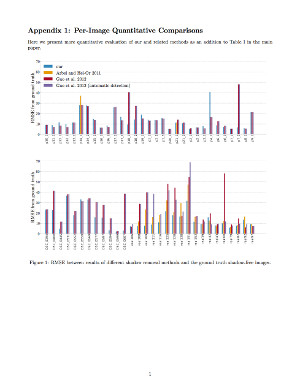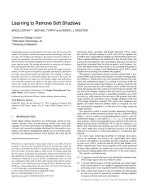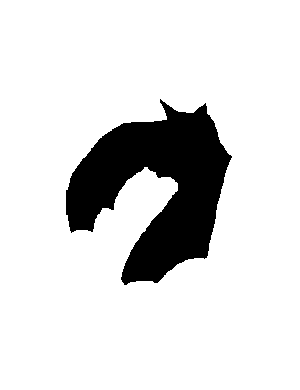Learning to Remove Soft Shadows
1University College London, 2Anthropics Technology Ltd., 3University of Waterloo
Manipulated images lose believability if the user's edits fail to account for shadows. We propose a method that makes removal and editing of soft shad- ows easy. Soft shadows are ubiquitous, but remain notoriously difficult to extract and manipulate. We posit that soft shadows can be segmented, and therefore edited, by learning a mapping function for image patches that gen- erates shadow mattes. We validate this premise by removing soft shadows from photographs with only a small amount of user input.
Given only broad user brush strokes that indicate the region to be pro- cessed, our new supervised regression algorithm automatically unshadows an image, removing the umbra and penumbra. The resulting lit image is frequently perceived as a believable shadow-free version of the scene. We tested the approach on a large set of soft shadow images, and performed a user study that compared our method to the state of the art and to real lit scenes. Our results are more difficult to identify as being altered, and are perceived as preferable compared to prior work.
More materials coming soon...
BibTeX
@article{Gryka2015softShadows,
title={Learning to Remove Soft Shadows},
author={Gryka, Maciej and Terry, Michael and Brostow, Gabriel J.},
journal={ACM Transactions on Graphics},
year={2015},
publisher={ACM}
}

 PDF (41MB)
PDF (41MB)
 Results (HTML)
Results (HTML)
 Supplementary PDF (0.6MB)
Supplementary PDF (0.6MB)
 Low-resolution PDF (2MB)
Low-resolution PDF (2MB)
 Source code archive
Source code archive
 Soft shadow generation script
Soft shadow generation script